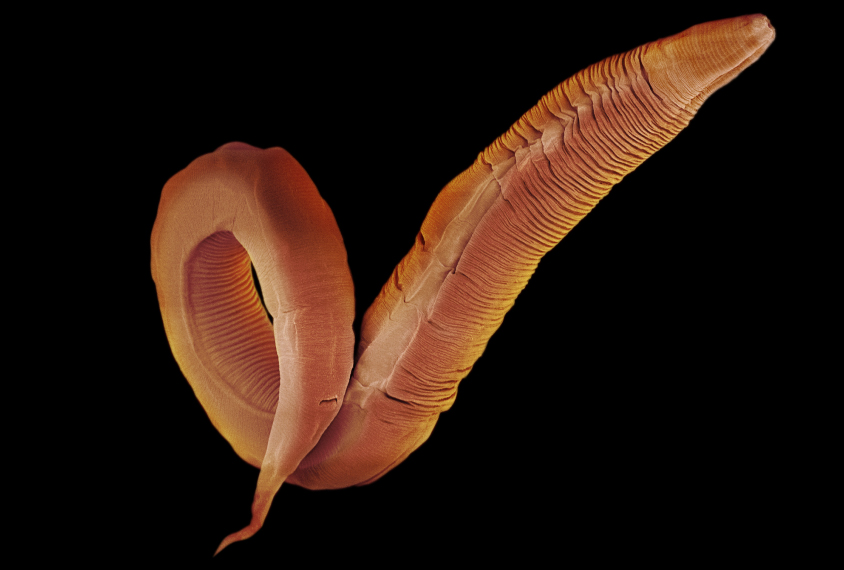
Wriggling worms yield clues to correcting autism mutations
Monitoring the movements of worms can point to potential treatments for autism.
Monitoring the movements of worms can point to potential treatments for autism. In a new study, researchers screened drugs for their ability to normalize swimming in worms with mutations linked to the condition1.
Roundworms have a simple nervous system consisting of 302 neurons. Researchers have long employed the organisms to study neurodevelopment. But only a few autism studies have relied on the worms.
In the new study, researchers used infrared light to monitor the movements of swimming worms that have mutations associated with autism. Movement abnormalities reflect problems with the worms’ neurons.
The researchers injected snippets of RNA into worm eggs to turn off or dampen the expression of 27 genes implicated in autism. They placed 30 worms bearing one of these altered genes in each well of a 96-well plate. They then inserted the plates into a commercially available machine that tracks the worms’ movements using infrared beams.
The machine uses specialized software to calculate a ‘movement score’ for each worm strain. The score reflects how the worms’ movements compare with those of typical worms.
The method, described 1 April in Experimental Neurology, revealed 12 gene alterations that impair movement in worms. When the researchers examined the mutant worms under a microscope, they saw fewer motor neurons than expected, and those neurons were abnormally shaped. Impaired motor skills are a hallmark of autism.
The researchers then homed in on four genes: the worm equivalents of the human genes ANK2, CACNA1C, GRIN2B and CACNA1A. The worms with alterations in these genes all had motor neurons with abnormal numbers and shapes.
The team exposed plates of these worms to more than 3,900 drugs. They found 49 drugs that improve movement in worms with altered ANK2, 56 that do the same in worms with CACNA1C changes, 62 that correct motion in worms with GRIN2B alterations and 28 that normalize swimming in worms with mutant CACNA1A. Understanding how those compounds reverse the mutations’ effects could offer clues about autism and point to new treatment targets.
References:
- Schmeisser K. et al. Exp. Neurol. 293, 101-114 (2017) PubMed
Recommended reading

Expediting clinical trials for profound autism: Q&A with Matthew State

Too much or too little brain synchrony may underlie autism subtypes
Explore more from The Transmitter

Mitochondrial ‘landscape’ shifts across human brain

